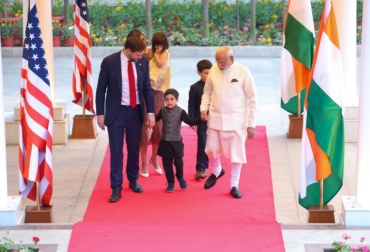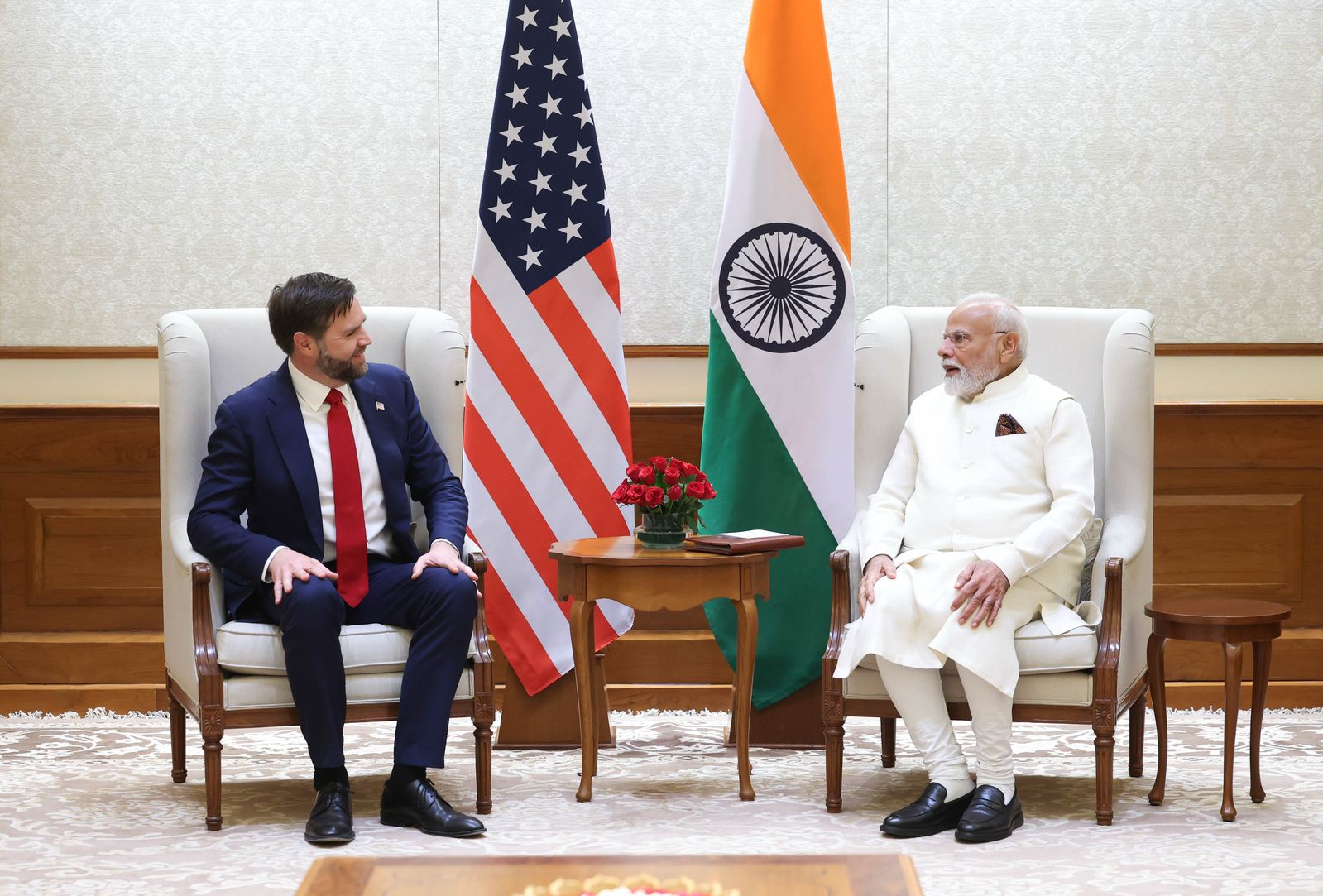Introduction
India-US Trade Deal discussions took center stage as US Vice President JD Vance met Prime Minister Narendra Modi in New Delhi during his four-day official visit. With global markets watching closely, this high-level meeting comes amid escalating tensions in the US-China trade war and ongoing negotiations between India and the United States to finalize a pivotal bilateral trade agreement. The talks not only signal a strategic economic alignment but also reflect a broader push to enhance cooperation in defence, technology, and investment sectors. As both nations strive to build resilient supply chains and safeguard their democratic interests, the outcome of this meeting could shape future global trade dynamics. Here’s a detailed look at the Modi-Vance meeting and its far-reaching implications.
What Was the Background?
The bilateral relations between India and the United States have deepened significantly in recent years, especially under the leadership of PM Modi and the Trump administration. While the world faces economic disruptions due to rising protectionism and supply chain shifts, India and the US have identified new opportunities to collaborate across trade, defence, and technology.
Earlier trade tensions, such as tariffs imposed by the US on Indian exports, had led to delays in finalizing a comprehensive agreement. However, recent diplomatic engagements hint at a renewed commitment to resolving these issues.
What Happened During the Modi-Vance Meeting?
Vice President JD Vance held a closed-door meeting with PM Narendra Modi, followed by delegation-level talks. The leaders reviewed the progress of the India-US trade deal and discussed frameworks for defence, technology, and energy collaboration.
The meeting was seen as a continuation of momentum gained from Modi’s previous visit to Washington, where a strategic roadmap for bilateral ties was laid out.

India-US Trade Deal: Current Status
A Crucial Phase in Trade Negotiations
Negotiations for the much-anticipated India-US trade deal are in their final stretch. According to official sources, sector-specific discussions are scheduled this week, with a possible agreement by the end of May. Finance Minister Nirmala Sitharaman is also expected to advance talks during her upcoming visit to Washington for IMF meetings.
President Trump has temporarily paused new reciprocal tariffs for 90 days, giving both sides a vital window to finalize a mutually beneficial agreement.
“India will not be rushed into an agreement. A trade deal will be signed only when it addresses our national interests,” a New Delhi-based official told Bloomberg.
Strategic Investments and Technology Collaboration
India is seeking a significant boost in US investments, particularly in sectors such as:
- Electric vehicles (EVs) and manufacturing
- Technology and digital infrastructure
- Energy and clean tech
In a symbolic move, Elon Musk recently spoke with PM Modi and is expected to visit India later this year. His companies—Tesla, SpaceX, and Starlink—are anticipated to explore entry into the Indian market.
Furthermore, Holtec International, a US-based nuclear firm owned
by Indian-American Krishna P. Singh, has received approval to co-develop nuclear power plants in India. Its subsidiary, Holtec Asia, operates in Pune and Dahej.
US firms are also eyeing India as a preferred destination for electronic manufacturing, including laptops and smartphones, amid efforts to reduce dependence on China.

Defence and Strategic Cooperation
Defence cooperation remains a pillar of the India-US strategic partnership. Both sides have reaffirmed their shared interests in:
- Advanced defence systems and strategic technologies
- Maritime and missile technology
- Energy security
India is already designated a Major Defence Partner under the US Strategic Trade Authorization-1 (STA-1) category, granting it the same status as NATO allies.
While not confirmed, discussions might have included the offer of F-35 fighter jets and expanded collaboration in undersea technologies.
Links Suggested: India-Sri Lanka Relations : 5 Strategic Wins for Both Nations
Looking Ahead
The ongoing dialogue marks a turning point in India-US relations, especially in the context of global geopolitical shifts. India-US trade deal under negotiation is expected to set new standards for cooperation, opening up avenues for job creation, innovation, and industrial growth in both nations.
Key events to watch:
- Final round of trade negotiations by end of May
- Finance Minister’s strategic talks in Washington
- Elon Musk’s potential India visit
- Rollout of US investments in Indian tech and manufacturing hubs
Links Suggested: India-China Trade War: Can India Adopt Trump’s Economic Playbook?
Conclusion
The Modi-Vance meeting is more than a diplomatic engagement—it’s a signal of a deepening alliance. With trade, defence, and technology at the forefront, the India-US partnership is poised to shape the 21st-century global order. As both sides move closer to sealing a comprehensive trade agreement, this visit may go down as a milestone in rewriting the rules of global cooperation.

